#21 筋収縮-Muscle contraction
English follows Japanese
(Let me apologize in advance there might be some grammatical mistakes below.)
こんにちは。
ヨガインストラクターのuriです。
前回に引き続き「筋収縮」について触れながら、アーサナの効果について考察していきます。

designed by freepik.com
◻️「3種類の筋収縮」をおさらい
エキセントリック・コンセントリック
スクワットで膝を曲げて体を下ろしていくのがエキセントリック、体を持ち上げるのがコンセントリックです。
エキセントリックは収縮した筋肉を伸ばしながらも、筋肉がブレーキとなっている状態のことを指します。
アイソメトリック
壁を力いっぱい押すことを想像してください。このとき関節は動かず、さらに筋肉の繊維が長くなったり短くなることもありませんが、筋肉に緊張が走っていることが分かります。これがアイソメトリックです。
この状態では意図しないうちにお腹に力が入っており、腹筋が鍛えられます。
アイソメトリックは関節を曲げなくてもよいため、エキセントリック・コンセントリックと比べて体の負担が少ないと言われています。
◻️筋収縮からみるアーサナの効果
この3種類の筋収縮がバランスよく取り入れられているアーサナのひとつが、マラーアーサナ(花輪のポーズ)です。

designed by freepik.com
膝を曲げてお尻を落としていく動作=エキセントリック、
合掌する手と手、肘と膝とで押し合う動作=アイソメトリック、
膝を伸ばして体を持ち上げる動作=コンセントリックです。
またアイソメトリックの代表的なポーズとして、プランクが挙げられます。

designed by freepik.com
アイソメトリックの動作時は、ゆったりとした呼吸を心がけましょう。呼吸を止めると血圧が上がってしまいます…!
例えば「合掌」は、いつでもどこでも実践することができます。そして「結果的に体幹も鍛えられる」というのも魅力的。
「10秒合掌して、10秒休憩」が良いそうです。ぜひ忙しい日々の合間に、取り入れてみてはいかがでしょうか。
------------------------------------------------------------
#21 The effect by "muscle contraction"
Hello, everyone.
I'm uri, a yoga instructor.
I'll talk about "muscle contraction" again as I did in the last article, and consider the effect of yoga pose.

designed by freepik.com
◻️About muscle contraction
Eccentric & Concentric Contraction
Eccentric Contraction is an action you bend your knees deeply without completely sitting down, whereas Concentric Contraction is an action you stand up.
Isotonic Contraction
If you imagine that you push the wall strongly, you'll find your muscle keeping still.
Both joint and muscle fiber don't be active, but the muscle have a tension. That's just Isotonic Contraction, which develop the abdominal muscle involuntary.
Isotonic Contraction don't need bending joint, so it's less harm your body.
◻️The effect by "muscle contraction"
The one of the well-balanced yoga poses which contains these three types of muscle contraction s is Garland Pose.

designed by freepik.com
In Garland Pose,
●bending knees=Eccentric Contraction
●Putting your palms together strongly
=Isotonic Contraction
●standing up=Concentric Contractio
Take a slowly breath during Isotonic Contraction. If you don't do that, your blood pressure would go up.
Plank is also known as the main pose of Isotonic Contraction.
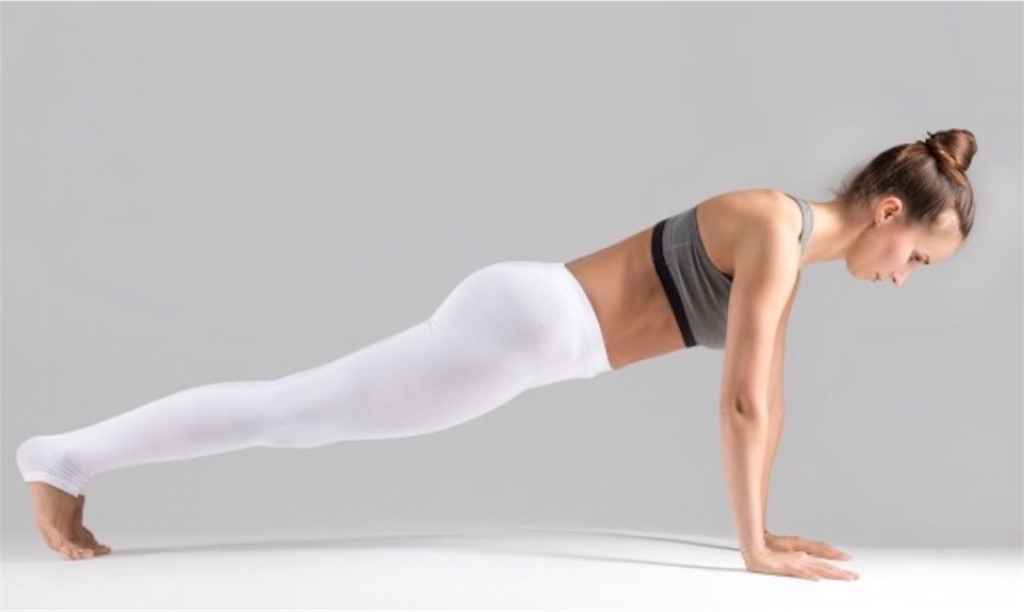
designed by freepik.com
Basically, people do yoga to calm yourself down and find yourself just in yourself. But it's also a benefit that you can train your whole muscle including a core muscle.
How about Putting your palms together anytime and anywhere you want with counting 10 seconds?
Thank you for reading this all!
#20 筋肉-Developing muscle
English follows Japanese
(Let me apologize in advance there might be some grammatical mistakes below.)
こんにちは。
ヨガインストラクターのuriです。
一般的に世の女性は「筋肉を大きくしたい」というより、「綺麗に引き締めたい!」という方のほうが多いのではないでしょうか。

designed by freepik.com
◻️「筋肉が大きくなる仕組み」とは
筋肉は「筋繊維が傷つく→修復」を繰り返して大きくなります。
筋繊維は、普段の運動よりも高い負荷をかけることで傷つきます。これを修復し、さらに成長させるためには、タンパク質などの栄養分と良質な睡眠が欠かせません。
この筋肉を成長させるプロセスにおいて重要な「筋収縮メカニズム」は、以下の通り。なかでも「エキセントリック筋収縮」が効果的だという説があるようです。
1)伸縮性収縮によるエキセントリックトレーニング(ウエイトを下ろしたりなど、筋肉が力を出しながら引き延ばされること)
2)短縮性収縮によるコンセントリックトレーニング(ウエイトを上げたりなど、筋肉が力を出しながら短く縮まっていくこと)
3)等尺性収縮によるアイソメトリックトレーニング(コンセントリックとエキセントリックの中間の静的運動)

designed by freepik.com
◻️ヨガで筋肉は大きくなる?
結論から言うと、女性が普通に出来る程度のトレーニングでは、簡単には大きくならないそう。また気になる部分を引き締めるためには、全身をまんべんなく筋トレする必要があるようです。
私たちの身体は「腕の脂肪だけを部分的に減らしたい!」という部分痩せはできない=脂肪を減らすには、全身の脂肪を減らさなくてはいけないそうなんです。
「履くだけで足が細くなる」とか「巻くだけでお腹がやせる」などの効果をうたったアイテムは基本的に効果なし…なのでしょうか。
そういった観点でもヨガは…
❶ひとつのポーズだけでも、コンセントリック・エキセントリック等がバランスよく行えるものが多いこと
❷さらに様々なポーズをバランスよくシークエンスに組み込むこと
以上のことから「全身の筋肉をバランスよく」さらに「様々な種類の刺激を与える」いう意味で、綺麗に体を引き締めるのに最適だと思います。
学べば学ぶほど、ヨガは理にかなってるなぁと実感します…!
------------------------------------------------------------
#20 Developing muscle
Hello, everyone.
I'm uri, a yoga instructor.
I guess most woman would like to make their body look more beautiful rather than bigger.

designed by freepik.com
◻️How the muscle is developed
The muscle gets bigger by the cycle of being damaged and recovered.
If you do much more exercises than usual, the muscle hurt. To promote this, Eccentric Contraction can be a effective way, which you extend your muscle.
This damaged muscle can be developed by good nutrition, sleeping, and taking a rest.
Here're some details of three types of muscle contraction.
Eccentric & Concentric Contraction
Eccentric Contraction is an action you bend your knees deeply without completely sitting down, whereas Concentric Contraction is an action you stand up.
Isotonic Contraction
If you imagine that you push the wall strongly, you'll find your muscle keeping still.
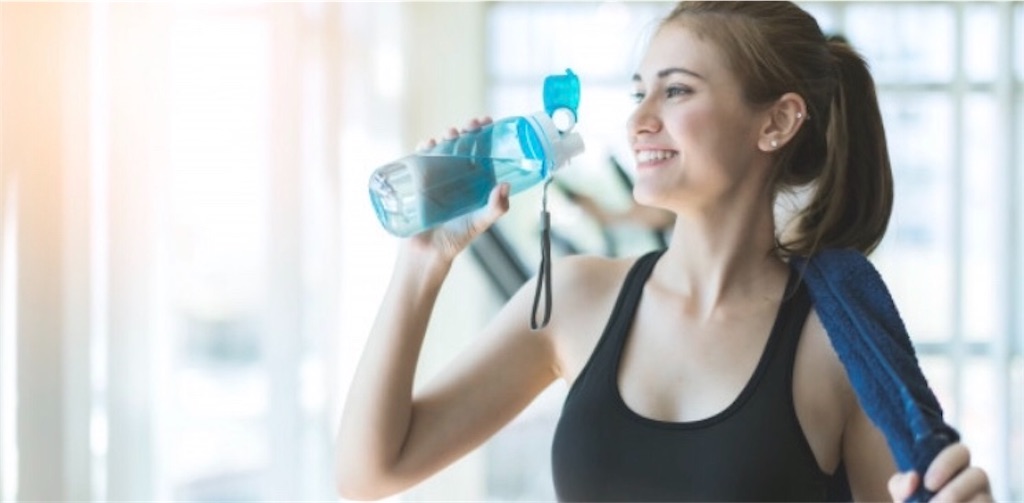
designed by freepik.com
◻️Yoga makes muscle bigger?
As it turns out, the training which isn't hard for woman don't make muscle bigger.
If you'd like to improve the part of your body which you want to change, you need to train your whole body completely.
Some experts say we can't get rid of just only the part of the fat.
In this point of view, yoga …
❶ has well-balanced poses which contain three muscle contractions.
❷ can be composed in good sequence.
it's not too much to say that it's the best way to get in shape in terms of various stimulation.
Thank you for reading this all!
#19 アジャスト-Adjustment
English follows Japanese
(Let me apologize in advance there might be some grammatical mistakes below.)
こんにちは。
ヨガインストラクターのuriです。
今回は「アジャスト」について考えてみます。

designed by freepik.com
◻️アジャストとは何か
アジャストとは「ケガ予防のための調整法」であり、その手法はいくつかあります。
まずは正しい型をお見せする「ビジュアルキュー」、次に、シンプルで分かりやすい言葉で導引する「バーバルキュー」、そして実際に身体に触れて調整する「アジャスト」です。
行う順番としては、ビジュアルキュー、全体、個別バーバルキュー、そして最後に必要であればアジャスト、が良いとされています。
ケガしやすいとされている部位、膝や足首などの方向を、注意深く観察していきます。

designed by freepik.com
◻️危険なアジャストはケガを招く?
ベルギーで、アシュタンガヨガのレッスンを受けた時のことです。(#04、#05とは別の先生です。)
ポーズ中いきなり後ろから腰を掴まれ、力強くぐぃっと、骨盤を正面に向けられました。(他にも驚いたことがちらほらと…)
幸いケガはありませんでしたが、RYT200の講義でアジャストの難しさを教わっていただけに、このような強引なアジャストをされる方がいらっしゃることに正直驚きました。
ヨガの最中にケガをしたというようなニュースも少なからず耳にしますし、人によって骨格や関節の可動域は千差万別です。
インストラクターの中の常識、尺度で一概に「正しさ」を決めてはならないなと、あらためて身が引き締まる思いでした。

designed by freepik.com
とはいえ、適切なアジャストは必要だと思います。誤った型でポーズをとっていると体が歪み、思わぬケガや変性疾患を招きかねないからです。
アジャストはあくまで「身体でイメージを掴んでいただくためのサポート」であり、そしてそれは見栄えするカッコいいポーズではなく、その方の身体にとって心地よいポーズのイメージだと個人的には思っています。
そのためには、生徒さんご自身が自分の身体と向き合い、ある程度理論を理解した上で、体で覚えることが大切だと思います。
インストラクターがお手伝いできることは、まずは言葉で理論を伝えること。そして必要であれば、そっと手を添える程度に、丁寧に体を導いていくこと。
長期的な目線で考えたときに、私はそんなクラスにしていきたいなと思います。
---------------------------------------------------------------
#21 The need of "adjustment"?
Hello, everyone.
I'm uri, a yoga instructor.
I'm going to talk about "adjustment" in this article.
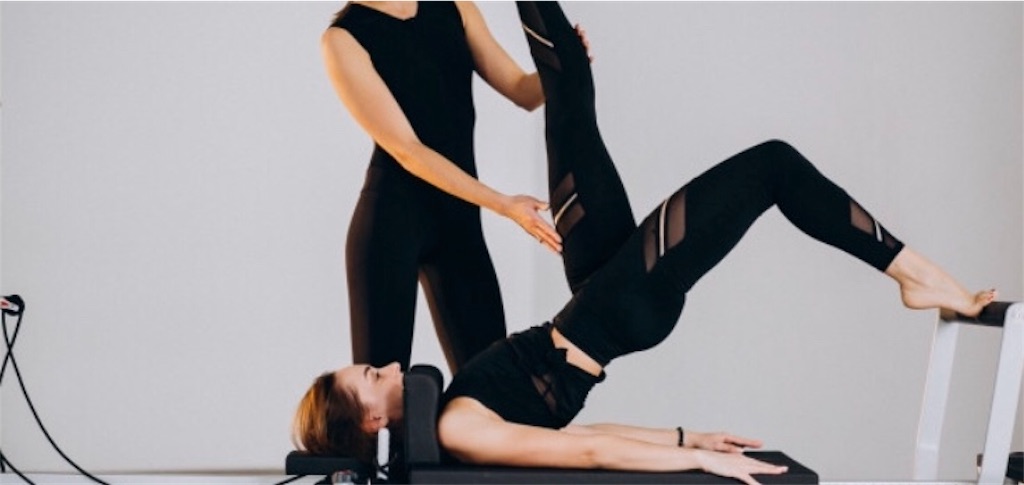
designed by freepik.com
◻️What's an adjustment?
Adjustment is the way which adjust your posture to prevent any harm. There're several types of that.
●showing a demonstration of an exact posing.
●telling in verbal how to restore balance.
●touching the client's body directly to adjust if it's needed.
It's generally recommend to do in above order.
You should make sure to look carefully at the part of body which is likely to hurt, like knees, the direction of ankles, and so on.

designed by freepik.com
◻️Adjusting in a wrong way could be danger?
Recently, I've heard of much news about physical accidents in doing yoga. I've been getting more careful by knowing this fact.
And I found that we shouldn't follow only my own idea because there're various types of skeleton and joint by person.

designed by freepik.com
Having said that, adjusting in a right way is quite important, because posing wrongly will make your body warped and cause any harm such as degenerative disease.
We can say like Adjustment is nothing more than "support" for leading clients to the comfortable pose instead of good-looking posing.
So, I suggest that clients learn also by themselves how to do yoga logically and physically. Instructors should help them by word at first. The next step is adjustment gently touching.
This is my ideal way to have my class for long term, I think.
Thank you for reading this all!
#18 腹圧-Abdominal pressure③
English follows Japanese
(Let me apologize in advance there might be some grammatical mistakes below.)
こんにちは。
ヨガインストラクターのuriです。
「腹圧」について考えるシリーズ、最終回です!
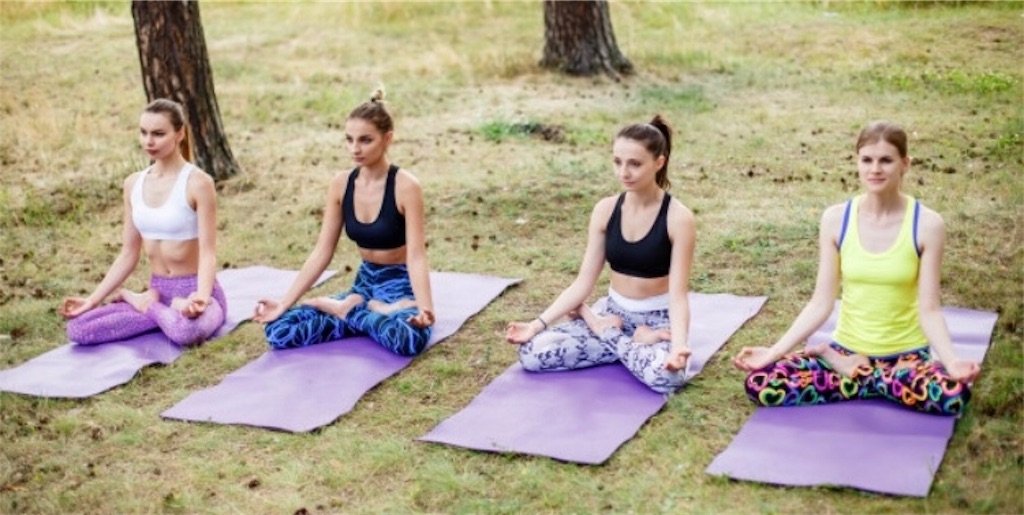
designed by freepik.com
◻️内腹斜筋・外腹斜筋とは・・・
体の回旋、姿勢保持をサポートする筋肉です。両者の異なる点は、その位置と筋繊維の向き。
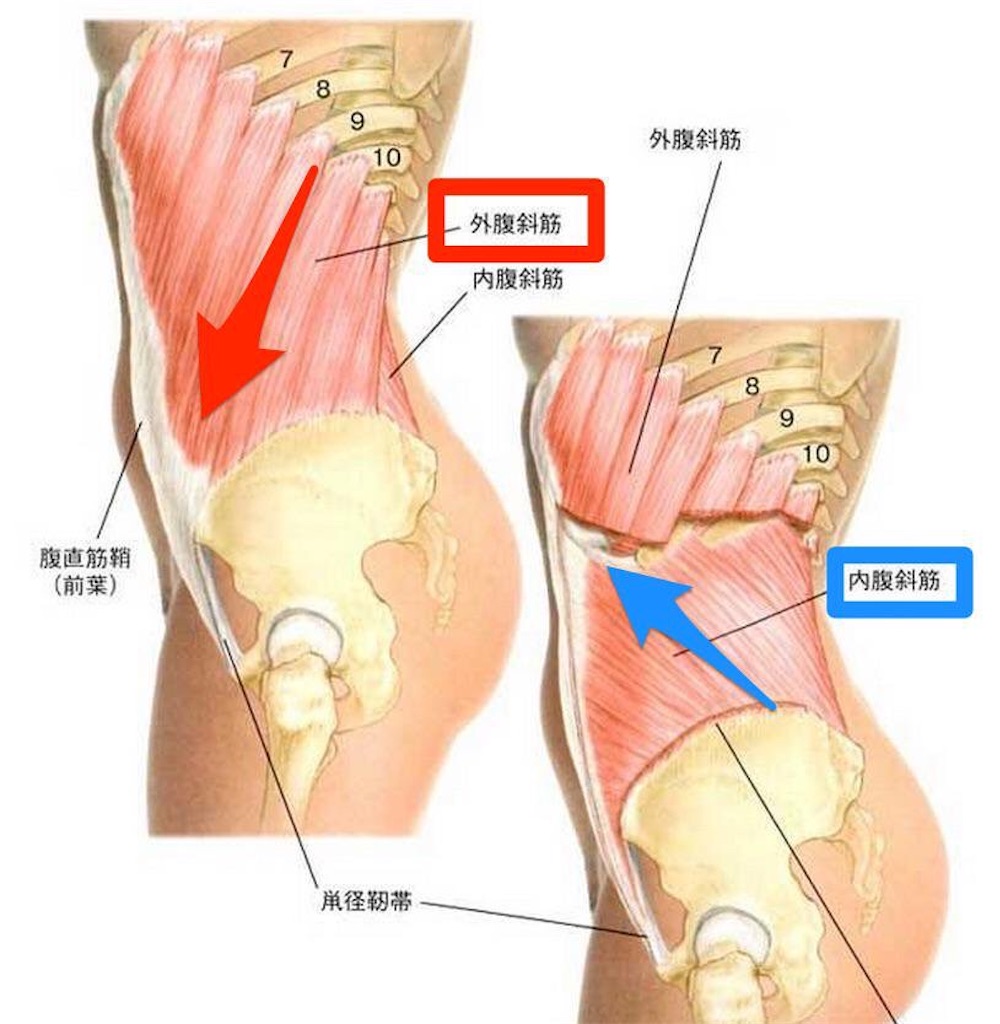
画像出典 解剖生理学勉強法.biz/kyouzai
「外腹斜筋」は腹部の全体を覆う表層筋であり、筋繊維は斜め下。「内腹斜筋」は腹横筋と外腹斜筋の間についている深層インナーマッスルで、筋繊維は斜め上。
(※11/14:筋走行が誤っていたため、訂正致しました。ご指摘ありがとうございます。)
内腹斜筋は脇腹を中心に巻き付くように存在しているため、鍛えれば綺麗なクビレが手に入るかも…!
◻️内腹斜筋・外腹斜筋を活性化するポーズ
これらを活性化するポーズは、「屈曲」「捻り」「側屈」です。
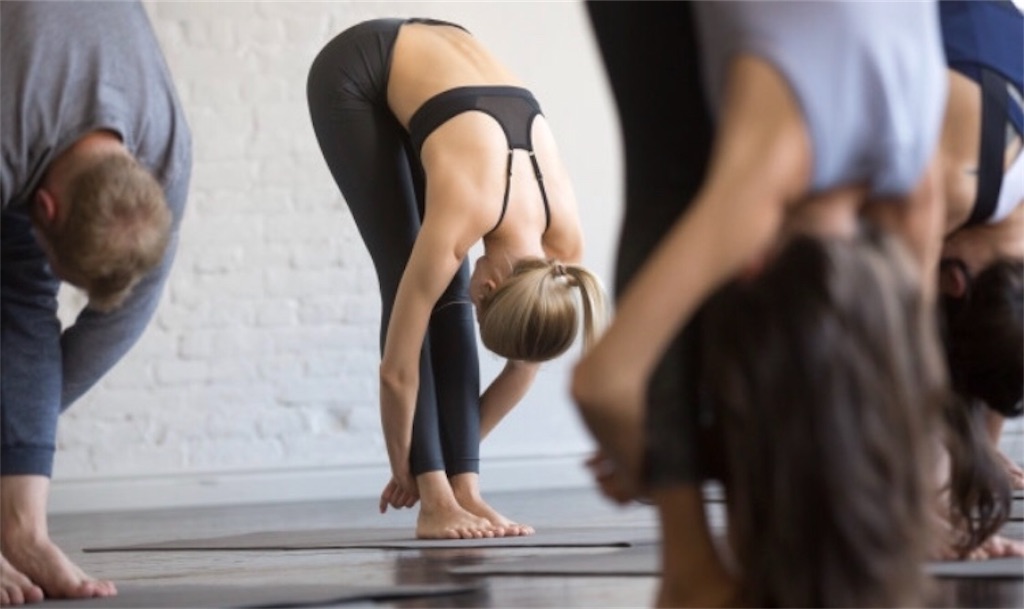

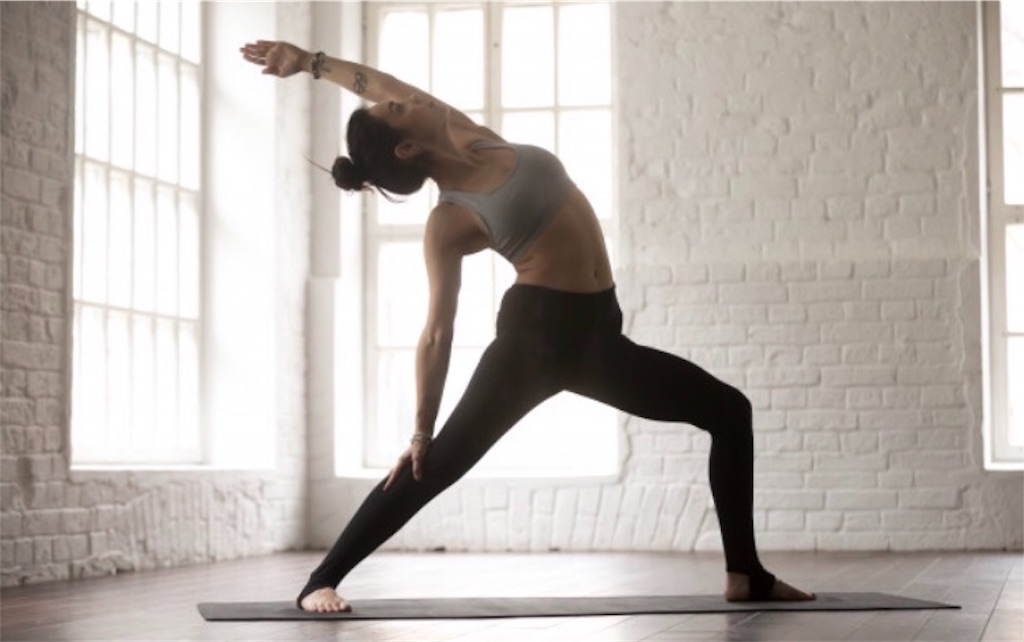
designed by freepik.com
◻️分かりやすい腹圧インストラクション
#16、#17と見てきたように、「お腹」と一言で言っても、様々な筋肉がありました。
「どこからどこまでの筋肉を、腹圧関連筋として認識しているか?」にズレがあると、インストラクションの受け取り方も変わってきそうです。
「お腹」という言葉に頼りすぎずに、こうした筋肉の連動を、分かりやすい言葉で伝えられたら…!
私は、腹圧を次のように解釈しました。「骨盤底筋から始まり、股関節部が下肢と体幹を適切にジョイントし、おへそ下から横隔膜あたりの各筋肉が、平らなコルセットとなるようなイメージ。」
以下の通り、インストラクションに落とし込んでみます。
❶左右の上前腸骨棘にそれぞれ両手をあて、股関節に小指側を添わせて面を作る。この面が床に対して垂直になるよう、尾骨を真下に向けるよう意識する。
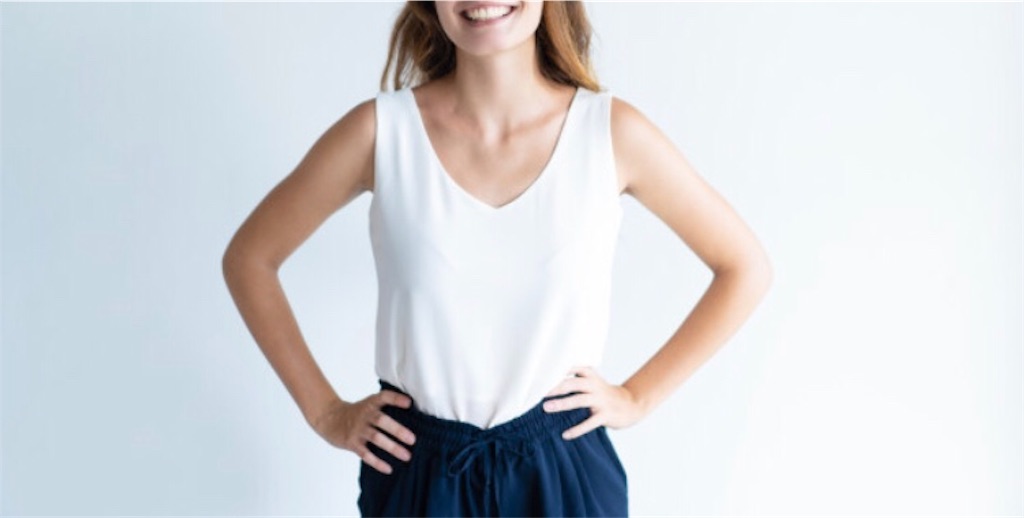
designed by freepik.com
❷その骨盤・背中の位置は固定したまま、股関節付け根からみぞおちまで「お腹全体」を背中方向に近づけるように体幹を薄くする。
❸そして両脇の付け根前側(ハミ肉の部分)が斜め上方向に引っ張られ、それに連動するように肩甲骨が下がり、胸が開くイメージです。(=肩甲骨の下制)
※僧帽筋群が弱い方(=巻き肩クセがある方)は、僧帽筋群が前方に倒れこみ、みぞおちが前にぽこっと出てしまうことがあります。(私は典型的なこのタイプで、みぞおちに余計な力が入っていました。)
…とはいえ、自分の感覚を言語化した部分が大きいので、果たして生徒さんにとってわかりやすいのかどうなのか…
ぜひ他の先生方のご意見を聞いたり、生徒さんの反応を伺いながら、より良いインストラクションを考え続けていきたいなと思います。
---------------------------------------------------------------
#18 Abdominal pressure③
Hello, everyone.
I'm uri, a yoga instructor.
This is the last part of series of "abdominal pressure".
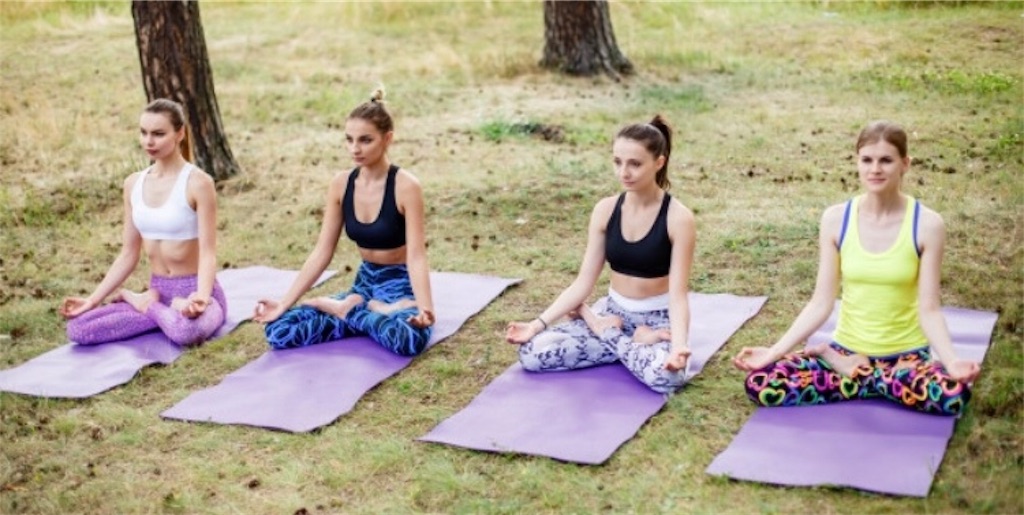
designed by freepik.com
◻️Internal oblique & External oblique
They're muscles which help maintaining good posture and twisting your body. The difference between them is their positions and the direction of muscle fibers.
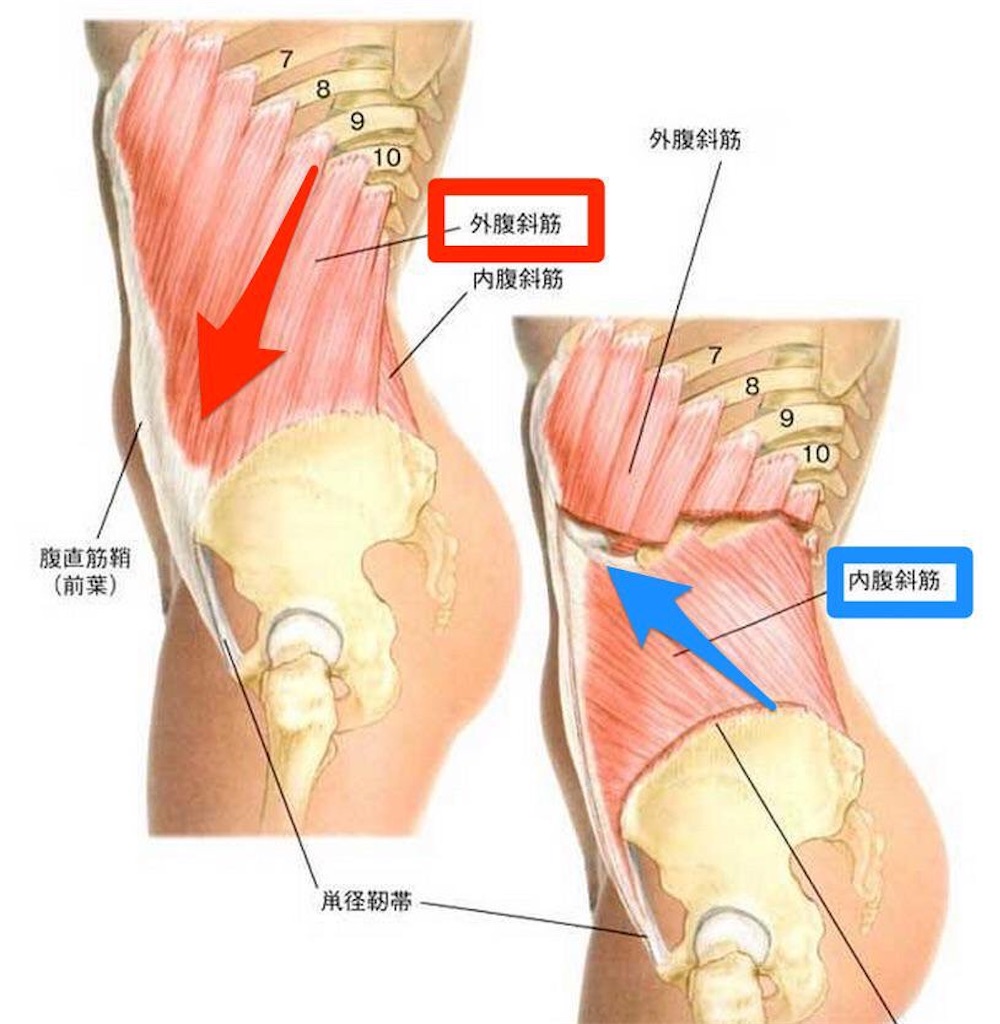
画像出典 解剖生理学勉強法.biz/kyouzai
"External oblique" is the muscle which covers over an abdominal part in the surface layer. Its direction of muscle fibers gose down.
"Internal oblique" is the muscle which exists between transversus abdominis muscle and External oblique in the deep layer. Its direction of muscle fibers gose up.
If you want to get a beautiful waist, you should train Internal oblique because it's around waist.
◻️To enhance Internal & External oblique
To enhance them, these three types of pose would be helpful.

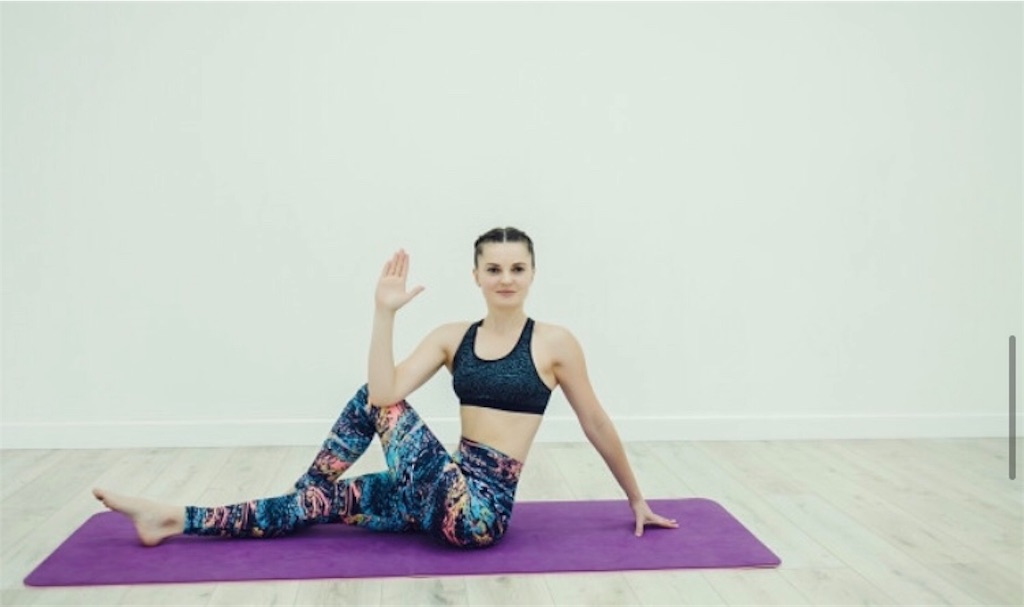
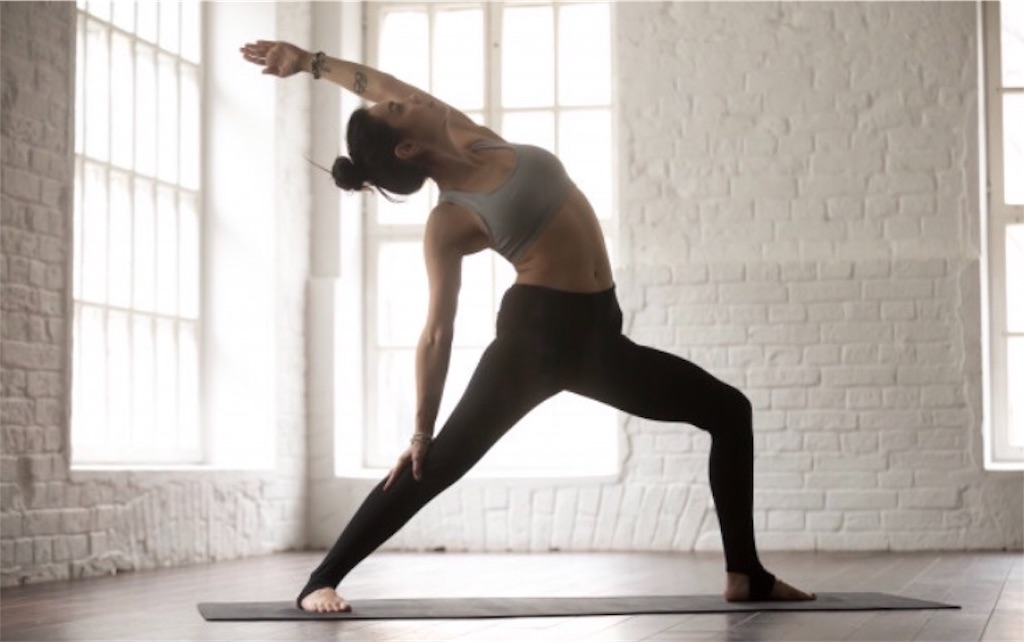
designed by freepik.com
◻️Clear instructions are needed.
As I also mentioned in the last two articles, I suppose the word "abdomen" is a bit vague to understand exactly what the muscle is.
If we just say "abdomen", it doesn't mean there's only one muscle. In fact, there're various muscles.
People might recognize it differently, like how range we should recognize as "abdomen". This fact would make people confused.
So we should instruct using a fine word which people can imagine the connection of muscles instead of the word "abdomen".
I interpreted "abdomen" following.
It starts from a pelvic floor muscle, a hip joint connect the legs and the trunk properly. Then, the diaphragm muscle feel like a corset.
I've tried to put my idea into an instruction below.
❶Put both your hands on the waist and put your little finger along the hip joint.Make sure the angle of pelvic is vertical and the direction of coccyx is almost vertical as well.
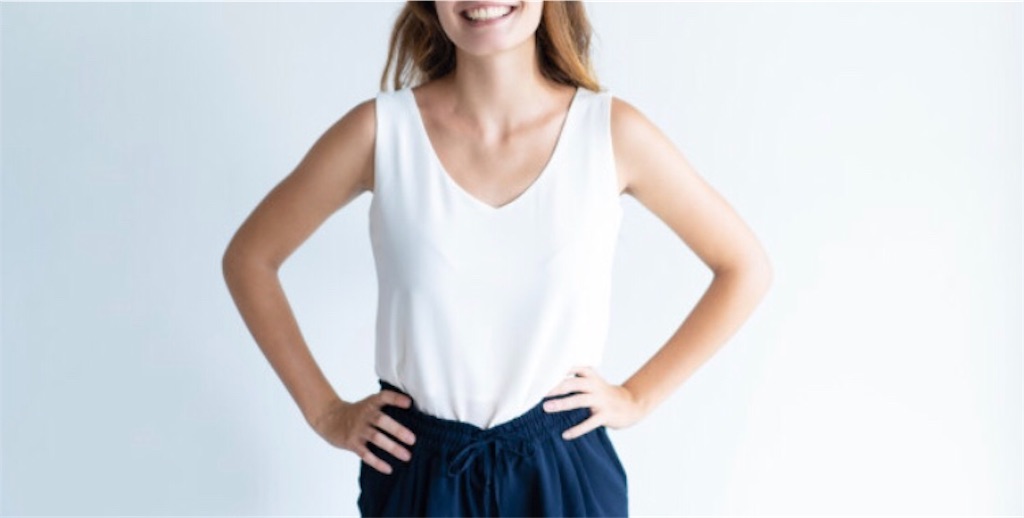
❷Keeping the positions of pelvis and spine, make the area between hipjoint and diaphragm approach to your back.
❸Just imagine that both your underarms are lifted diagonally upward, which makes your scapula goes down, and open your breast.
※For those who have a weak trapezius muscle, trapezius muscle and diaphragm tend to go forward. (I'm a typical type of this. It used to cause an needless pressure on the diaphragm.)
Having said that, it's mostly based on just my though, I'm wondering if it's easy to understand for client.
I really want to share the idea with other instructors, or watch the reaction of client. I'll keep thinking of the better instruction.
Thank you for reading this all!
#17 腹圧-Abdominal pressure②
English follows Japanese
(Let me apologize in advance there might be some grammatical mistakes below.)
こんにちは。
ヨガインストラクターのuriです。
前回に引き続き「腹圧」について考えていきたいと思います。

designed by freepik.com
◻️歪みの判定方法・ニュートラルとは?
前回の記事でも触れましたが、腹圧の入れ方は「生徒さんの身体の歪み方によって異なる」と思います。
「骨盤前傾」であれば、まずはお尻を締めつつ脚を外旋方向に向け骨盤をニュートラルにセットするし、「骨盤後傾」であれば、逆方向の動きが必要になります。
姿勢の土台である「骨盤」が間違ったポジションで固定されているので、その上に乗る「体幹」も間違ったコンディション…縮んでいたり伸びていたりすることが多いです。

designed by freepik.com
これをニュートラルな本来の状態に戻した上で、正しく腹圧を入れなくてはいけません。その為にはまず、自分自身の歪みを自覚する必要があります。
↓歪みのない、ニュートラルな姿勢です。

そしてご自身が「骨盤前傾(反り腰型)」なのか「骨盤後傾(猫背型)」なのかを知るためには、
壁から少し離れたところで普段通り自然に立ち、そのまま壁側へ後ずさりすることで判定することができます。(詳しくは別の機会で…)
◻️正しい腹圧+自然な呼吸
正しく腹圧をセットするために必要な筋肉は、「腹直筋」「腹横筋」、
そして、自然な呼吸も両立させるためには、その間にある「内腹斜筋」「外腹斜筋」の活性化がとても重要です。

「腹圧を入れる」=最も表層にある「腹直筋」にのみ力を入れる意識に(私は)なりがちですが、そうすると呼吸がしづらくなります。
なぜなら、呼吸をする際に腹筋群が働く順序は、深部から①腹横筋、②内腹斜筋、③外腹斜筋、④腹直筋、と言われているからです。
最初に④が硬くなることで、本来働くべき①〜③がスムーズに働かなくなり、呼吸がうまくできなくなるのでは…と個人的に考えています。
次回は、この内・外腹斜筋にフォーカスしつつ、これらの筋肉を活性化するヨガポーズ、さらにどんなインストラクションが効果的なのかを、頭を悩ませながら考えてみたいと思います!
----------------------------------------------------------------
#17 Abdominal pressure②
Hello, everyone.
I'm uri, a yoga instructor.
Let's consider the abdominal pressure.

designed by freepik.com
◻️The way to know how warped you are
As I mentioned in the last article, I think the way of abdominal pressure depens on how warped our bodies are.
If "The pelvis leaned forward"
Lead your legs to external direction and make pelvis neutral.
If "The pelvis leaned backward"
It needs the opposite way of abve.
If the pelvis which is the basis for posture is fixed wrongly, the waist based on that would be also like that, which means the waist would be extended or contracted.

designed by freepik.com
To correct them to the neutral position and place abdominal pressure on correctly, you should recognize your warped body.
First of all, I'll show you how the neutral condition is.

To check if the pelvis is neutral, leaned forward" or leaned backward…
Stand naturally, and go backward to the wall keeping posture, and you'll see it by comparing with the neutral condition.
◻️Correct abdominal pressure+Natural breath
It's quite important to activate "abdominal rectus muscle" and "transverse abdominal muscle" for setting correct abdominal pressure.
And it's also necessary to use "internal oblique muscle" and "external oblique muscle" which are between "abdominal rectus muscle" and "transverse abdominal muscle" for breathing naturally.

If you think that you should contract particularly abdominal muscle which is most surface one, It might disturb your breathing.
Because it's generally said that the order of muscles which are used in breathing is, from deeper layer, ①transverse abdominal muscle ②internal oblique muscle ③external oblique muscle ④abdominal rectus muscle.
We can't breathe well because these above ①〜③ which are supposed to be activated are not used properly, I personally think.
I'll continue this topic next article focusing on internal and external oblique muscle, thinking of effective pose and instructions.
Thank you for reading this all!
#16 腹圧-Abdominal pressure①
English follows Japanese
(Let me apologize in advance there might be some grammatical mistakes below.)
こんにちは。
ヨガインストラクターのuriです。
ヨガのクラス中「腹圧をいれる」というキューが出たとき「これで合ってるのかな?」と気になることはありませんか?
「お腹をしまい込む」
「腹圧をいれる」
「お腹を引き入れて、引き上げる」
インストラクターによって様々な言い方がありますし、私自身もどう表現したら良いかな〜と考えていました。

designed by freepik.com
◻️腹圧を維持する「腸腰筋」「腹横筋」
まずは腸腰筋。大腰筋と腸骨筋の総称で、大腿部と腰椎(体幹部)を繋ぐ筋肉です。この筋肉がきちんと働かないと、骨盤は安定しません。
次に腹横筋。この筋肉の効果は「腹圧をあげる」「強制的に息を吐く」「姿勢保持」「体幹部の安定」です。

画像出典:www.biteki.com/life-style/body-care/352723
ご自身の「腸腰筋」「腹横筋」を想像しながら「恥骨部から胸椎部までが縮まずに、まっすぐな状態か?」を意識してみてください。
もし縮んでいた場合は、腹直筋の柔軟性&脊柱起立筋の筋力が低下しています。
とはいえ、歪みが常態化していると、自分で縮んでいるかどうかの判定も難しいと思います。
◻️どのように「腹圧」を導引する?
個人的な考えとしては「生徒さんの身体の歪み方によって異なる」と思います。
生活習慣や体つきは人それぞれですので、厳密に言えば歪み方も千差万別ですが、大きく分けて「骨盤前傾(反り腰型)」か「骨盤後傾(猫背型)」に大別できます。
ちなみに私は「骨盤前傾(反り腰型)」。ニュートラル時に比べて、お腹が伸びて、背中が縮んでいる状態=胸郭部と恥骨部がニュートラルよりも離れている状態です。

designed by freepik.com
「骨盤前傾(反り腰)」の原因も人によって異なりますが、一般的には腹部の筋力低下と、背部の柔軟性低下によるものとされています。
これをニュートラルな本来の状態に戻した上で、正しく腹圧を入れなくてはいけません。その為にはまず、自分自身の歪みを自覚する必要があります。
いつもより、少し文量が多くなりました…!
次回以降は、歪みの判定方法、腹横筋・腹直筋を刺激するヨガポーズなどなど、更新させていただきます。
----------------------------------------------------------------
#16 Abdominal pressure①
Hello, everyone.
I'm uri, a yoga instructor.
Do you ever wonder if you are posing correctly when you hear the instruction "abdominal pressure".
There're various expressions by instructors. I'm still thinking of the better one.

designed by freepik.com
◻️To maintain "abdominal pressure
First of all, about "iliopsoas muscle". It's the general term for "psoas major muscle" and "iliac muscle", which connects the hip joint and waist. The pelvis can't be stable without this muscle.
Next, about "transverse abdominal muscle". This muscle has some effects like "abdominal pressure", "breathing strongly", "keeping good posture" and "maintaining waist".

出典:美的https://www.biteki.com/life-style/body-care/352723
I'd like to recommend you to feel carefully that the condition from pubis to thoracic vertebra is moderately straight instead contracting with "iliopsoas muscle" and "transverse abdominal muscle".
If it's been contracted, it means the flexibility weakness of the rectus muscle and the erector spinae. However, it might be difficult to discover the warped condition if it's already been natural for you.
◻️How to lead it
It depends on how warped the client's body is.
Strictly speaking, that are various according to daily life habit, the innate body construction or something like that. But the types of warp body can be divided into big two groups, "The pelvis leaned forward" and "The pelvis leaned backward".
By the way, I'm the type of "The pelvis leaned forward", which abdominal is extended compared with the neutral one. It's the condition which the pubis is more distant from the chest than natural.

designed by freepik.com
The cause of "The pelvis leaned backward" is also different by people, but generally considered due to muscle weakness of abdominal or flexibility weakness of back.
You should first correct it to neutral position and have abdominal pressure. For that, It's necessary to discover your warped body.
I'll write about the yoga pose to activate "transverse abdominal muscle" and "abdominal rectus muscle", the method of knowing how the warped and neutral body is in the next article.
Thank you for reading this all!
#15 勉強法-How to study yoga①
English follows Japanese
(Let me apologize in advance there might be some grammatical mistakes below.)
こんにちは。
ヨガインストラクターのuriです。
今回は、私がヨガを学ぶ上で参考にしている書籍をご紹介します。

まずは1冊目。ベルギー在住のため、Kindleで購入しました。タイトルの通り、姿勢と動きの関連性がとても分かりやすいです。
「屈曲・伸展、外転・内転、挙上・下制」などなど…専門用語が多く出てきますが、その点は抵抗なく読み進めることができました。
というのもRYT200の講義で、先生から度々「このポーズの肩甲骨は?」と問われ「下制!」と答えるといった訓練をしていたからです。

あの時の独特の緊張感が懐かしく、またそれによって「自分で考えるクセ」を養って頂いていたんだなぁと、改めてありがたく感じました。
主働筋と拮抗筋、起始と停止などの基本的な考え方も学ぶことができ、より一層理解を深めるための第一歩として、最適な一冊かと思います。
加えて筋力や柔軟性の評価法も書かれており、自分のヨガクラスでも活かしたいと考えています。
↓学んだことを、このように整理しています。

↓いつかパーソナルクラスを持ってみたいので…評価法も勉強しています。

この他にも参考にしている書籍がいくつかあります。(とはいえ、もっともっと実践しなければ…!)
また別の機会で紹介させて頂きます。
----------------------------------------------------------------
#15 How to study yoga
Hello, everyone.
I'm uri, a yoga instructor.
Let me introduce you my favorite book for learning yoga.

I bought this book on Kindle because I live in Belgium. As its title says, it helps us understand the structure of posture and physical movement.
(Its title is "You can see the structure of posture and physical movement by this book")
There're some technical terms in this book, but I didn't have big difficulty to keep reading.
Because, in school from where I've got RYT200 , we used to answer immediately many questions from teacher. She asked us like "How the shoulder bone is like in this pose? ", We quickly answered to that.

Looking back, I'm so grateful again to my teachers and my mates! We really concentrated on this RYT course in a nervous mood. I was encouraged to consider by myself. It was great for us.
I think this book would be the best one for the first step, which you can learn the basic things.
In addition, you can also get the evaluation method of muscle and flexibility. I'd like to use these knowledges properly in my yoga class.
↓I make notes to understand more deeply

↓I also study the evaluation method because I'd like to provide a personal lesson in the future.

I have any other books I recommend you. (Having said that, I must do a real lesson more and more...)
I'll introduce them on another occasion. Thank you for reading this all!